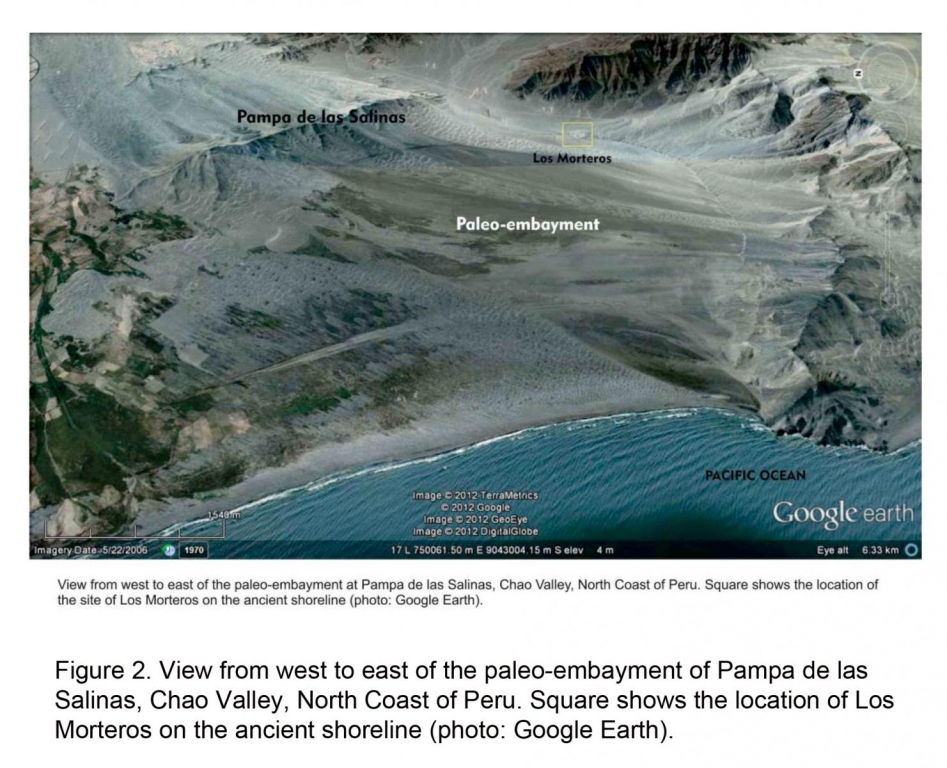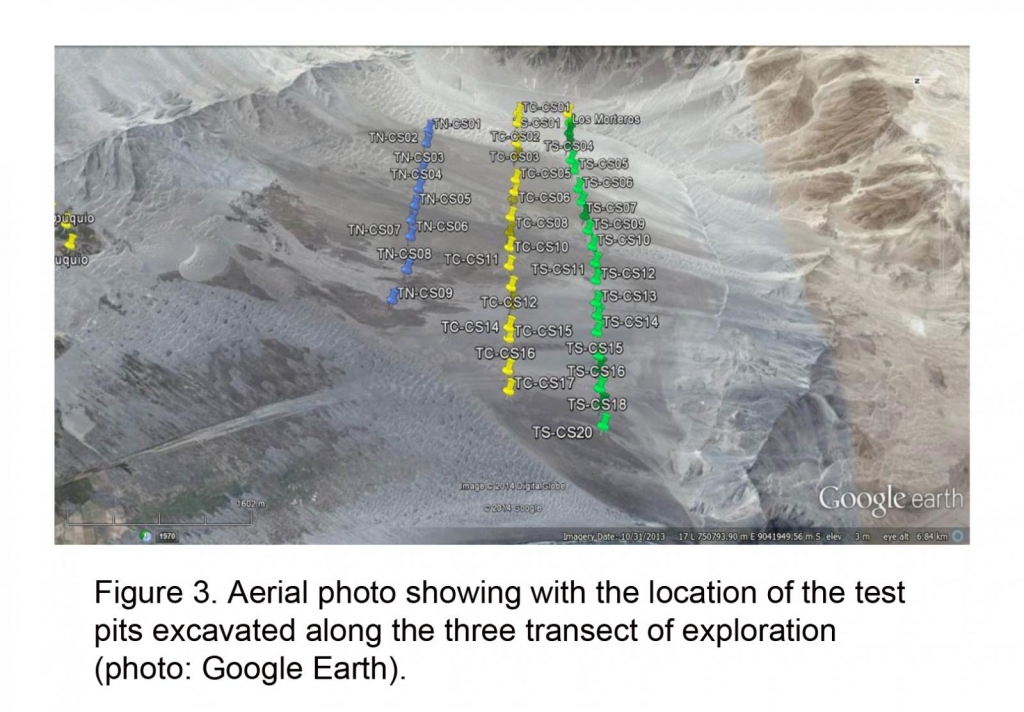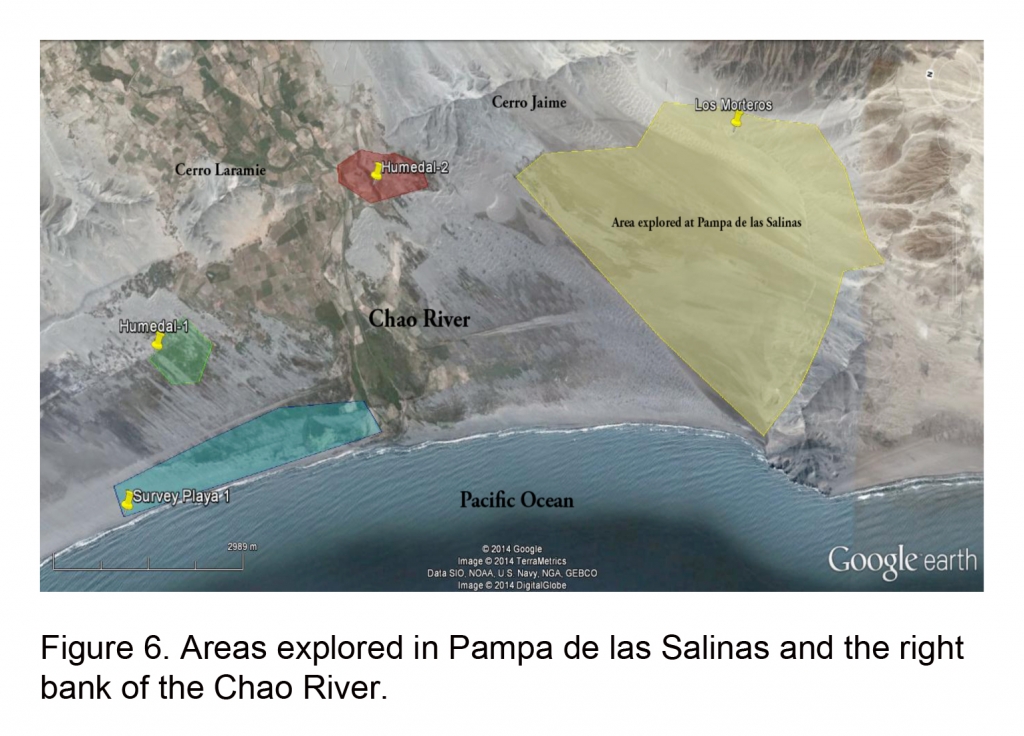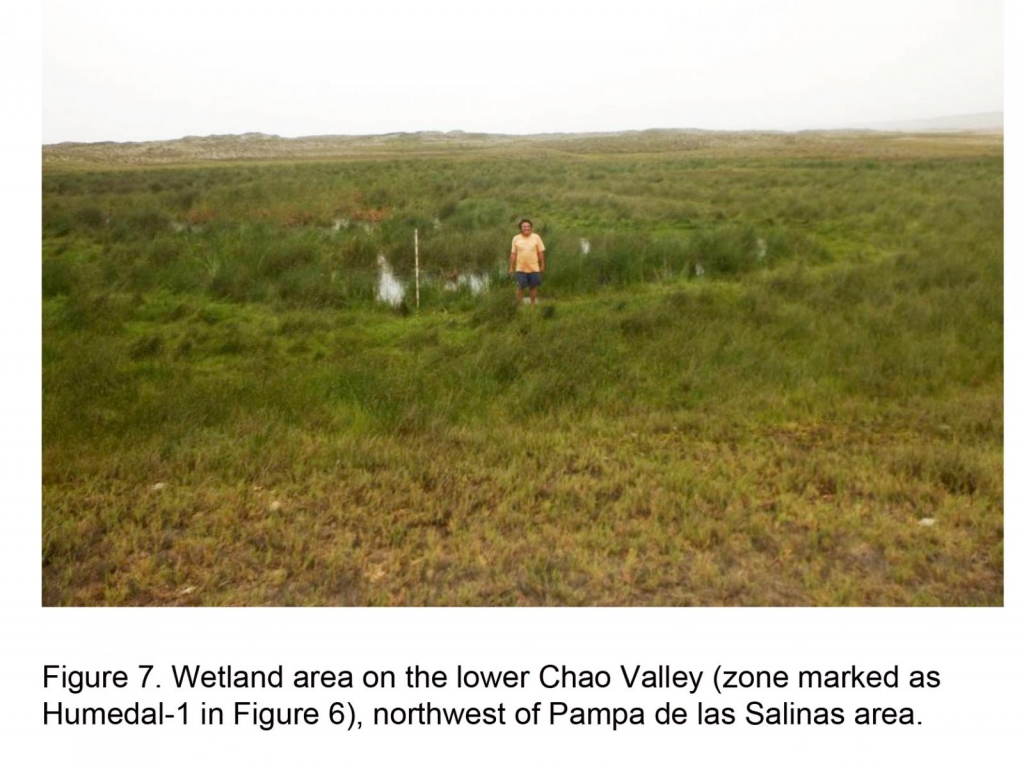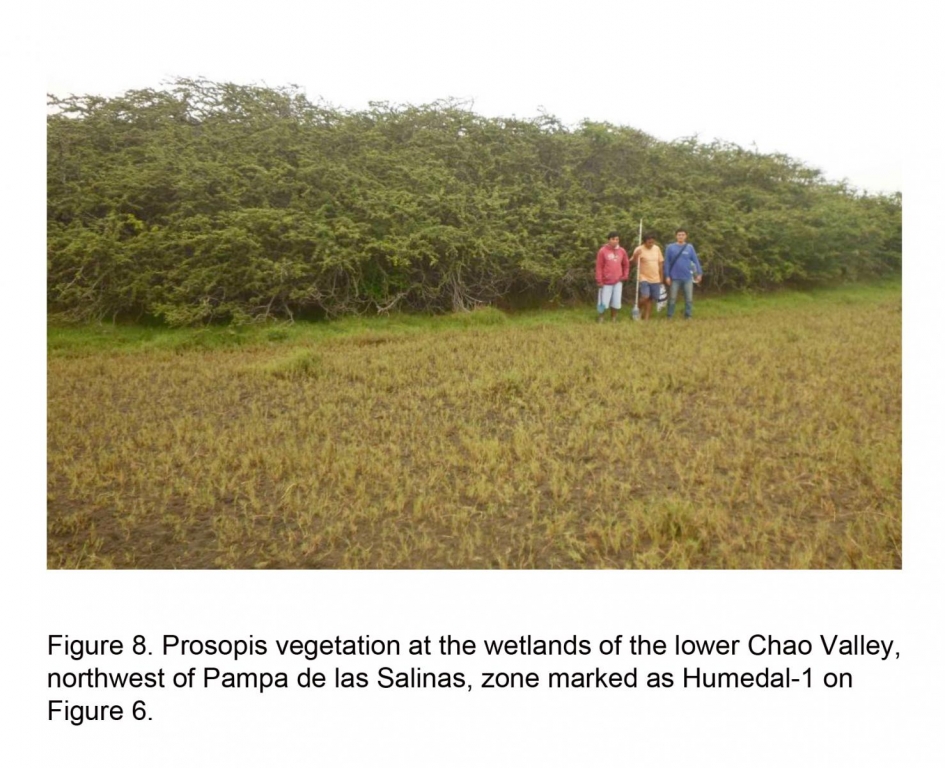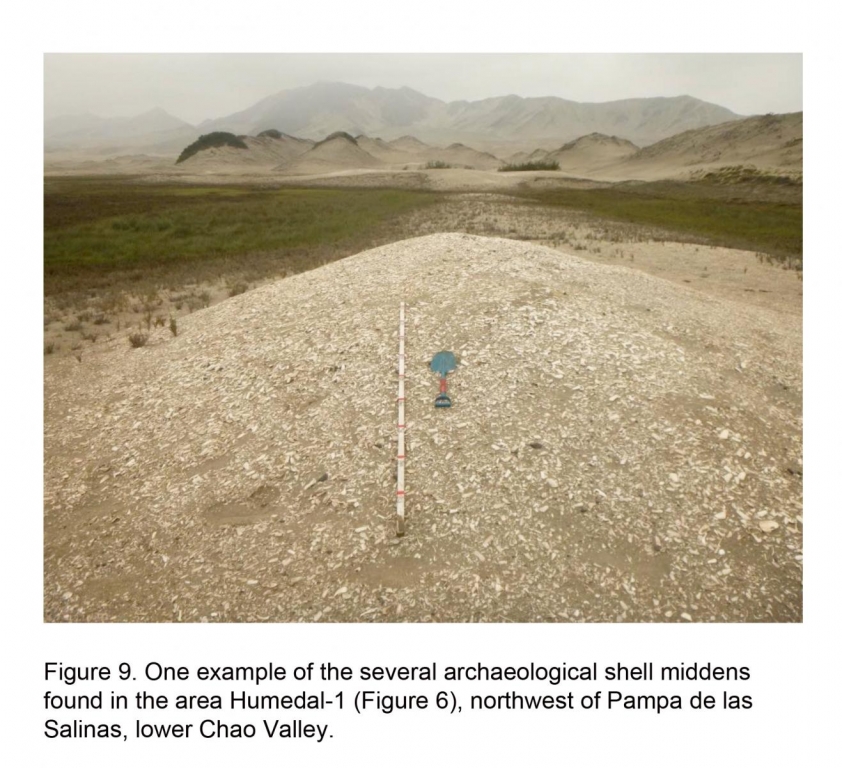Stratigraphic Exploration of the Paleo-embayment of Pampa de las Salinas
Stratigraphic Exploration of the Paleo-embayment of Pampa de las Salinas
Research Report Submitted to the Climate Change Institute at the University of Maine as a requirement for the Dan and Betty Churchill Exploration Fund
Ana Cecilia Mauricio
Introduction
Los Morteros is a pre-pottery archaeological site located on the lower Chao Valley, north coast of Peru (Figure 1 and 2). More precisely, Los Morteros is located on the area called Pampa de las Salinas which is a relatively flat area currently characterized by a hyper-arid environment. Despite its current conditions Pampa de las Salinas seems to have been a very different milieu since this is the part of the Chao valley that concentrates the majority of archaeological sites of the Preceramic Period.
Los Morteros is a mound-shaped archaeological site of monumental dimensions (100 m x 200 m x 15 m) that is entirely covered by eolian sand. Previous researches have dated Los Morteros to 3600-5500 cal BP] and have found evidence of architecture under thick layers of sand (Cardenas 1999; Sandweiss et al. 2010). In 2012 I carried out geo-archaeological investigations centered at the site of Los Morteros but incorporating its cultural and natural environment. Therefore, in addition to archaeological excavations in the mound of Los Morteros, this research included excavations of other archaeological sites near Los Morteros as well as geo-archaeological explorations of the Pampa de las Salinas and its paleo-embayment with the objective of understanding the pre-pottery human occupation of the area as a whole and to study the transformation of the landscape.
Data obtained during the 2012 field season indicated that human occupation of Los Morteros and the surrounding archaeological zone was closely related to the rich marine and coastal environment that characterized this part of the lower Chao Valley more than 5,000 years ago. In consequence, it was necessary to obtain more data about landscape transformation, to add to what was already known.
Field Work 2014
The proposed field work for 2014 was to complete the exploration of the stratigraphy of the paleo-embayment of Pampa de las Salinas started in 2013 with the excavation of test pits aligned into transects. The 2014 work was carried out from March to July. During this time it was possible to explore nearly 90% of the paleo-embayment of Pampa de las Salinas through three transects that were between 2.5 km to 4 km long and had an east-west orientation (Figure 3). Along each transect a series of test pits of 0.8m x 0.8 m that were excavated every 200 m or 150 m until reaching the level of the ground water (Figures 4 and 5). The objectives of this field work were to explore the stratigraphy of the paleo-embayment of Pampa de las Salinas, recognize the nature of the deposits, and understand the environments of deposition.
Transects were placed to the south, center, and north of the paleo-embayment (Figure 3). The southern transect was the longest, covering approximately 4 km east-west. Along this transect 20 test pits were excavated. In the central transect, 17 pits were opened (Figure 3). The northern section of the embayment was explored through nine test pits. Although the goal was to explore the dry embayment from the paleo-shoreline to the ocean, extended field dunes limited the area available for excavation.
All test pits were recorded with photos and site forms. Some of these test pits were selected to take column samples for sedimentary analysis. This analysis is in progress.
In addition to the exploration of the paleo-embayment of Pampa de las Salinas we were able to survey the northern part of the lower Chao Valley. This objective of this survey was to find natural springs detected in aerial photos. Springs can develop wetlands that are rich sources of faunal and floral species besides being possible sources of fresh water.
This survey of the north part of the lower valley covered three areas (Figure 6). Wetlands were found in two of these areas, both located along Andean foothills that run parallel to the ocean (Figures 7 and 8).
Results
The explorations of the paleo-embayment of Pampa de las Salinas carried out in 2012-2013, and during the field work of 2014 cover approximately 80% of this area (Figure 6). This work has allowed me to obtain profiles of different sections of this embayment; to recognize the environments that composed this part of the study area; as well as the identification of new archaeological sites.
The reconstruction of a general profile of three different sections of the paleo-embayment would contribute to the understanding of the process of ocean recession and sand invasion of the embayment. Moreover, this exploration will help to understand changes in the ground water location and salinity that in turn will give a better knowledge of the possible location of ancient wetlands and sources of fresh water in the area of Pampa de las Salinas.
Wetlands found in the explorations of the northeast side of Pampa de las Salinas and the right and left bank of the lower Chao River (Figure 6) serve as modern examples of landscape transformation and resource location. These wetlands and the several new archaeological sites and shell middens (Figures 7 to 9) found during this exploration help to understand the human occupation of this area in relation to the environmental changes transpired in Pampa de las Salinas.
All this research so far carried out at Los Morteros and Pampa de las Salinas represents a comprehensive study of the pre-pottery human occupation of this part of the Peruvian coast but it also represents a first step of a research that needs to continue to obtain more precise results.
Acknowledgements
I am very grateful for the generous support from the Dan and Betty Churchill Expedition Fund, The Graduate Student Government of the University of Maine, The Project “Long-term Human Ecodynamics in Coastal Peru: A Case Study of Polar-Tropical Teleconnections”, The Waitt Grant of the National Geographic Society, and The French Institute of Andean Studies.



